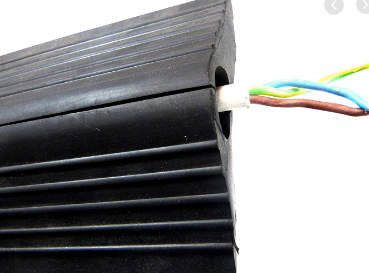Garage Door rubber Sealing is a vital step in garage door maintenance. Sealing prevents the door from getting clogged with dirt and grease, which can lead to poor function and even injury. Garage doors are used on a regular basis throughout the home, and if not maintained properly, can become damaged and even dangerous. Regular cleaning and maintenance can help keep a garage door working properly for many years to come. In this article, we will discuss rubber garage door sealing, how it works, and the benefits of sealing your garage doors.

Garage Door Rubber Sealing First, let’s discuss the importance of rubber garage door sealing. Before you can understand how and why rubber acts as an effective barrier against unwanted chemicals and moisture in the environment, you first need to understand how your garage door actually works. The lower threshold of your door allows any amount of cold air from outside to enter the building, while the higher threshold allows warm air from inside to enter.
So what happens when the threshold is blocked by one of these two types of weather? If cold air or moisture gets trapped between the threshold strip and the actual garage door, it will cause the door to slowly extend to the point where it is no longer effective in keeping out the weather. If left unchecked, this can result in a loss of temperature control for your home, as windows and insulation will be damaged. If the weather stripping is damaged, it could allow rain and other weather elements to enter your home through the bottom of the door, increasing your risk of damage and an increase in your cost for repair. As you can see, the purpose of this rubber weather strip is to prevent the weather from entering your home and deteriorating your building.
There are two types of rubber weather stripping available. There is the traditional weather stripping that runs along the bottom of your door and extends down towards the floor. This is generally the most common type and is what most homeowners opt for. The other type of weather strip is a raised strip, which runs along the top of the door and also down towards the ground. Raised strips are more aesthetically appealing, but have a slightly different function.
If you have a wooden door, you can still use these weather sealing strips, but only if you use a non-slip adhesive. To do this, you should pre-drill the holes for the adhesive and then stick the strips onto the pre-drilled holes. When installing, make sure that you leave at least five millimetres of space between the strips and the wood. If you want to double the amount of protection for wooden doors, you can try a five metre bottom weather strip replacement bottom instead of the standard three.
When installing the rubber weather stripping, it is important to install it in a straight line, and then follow the instructions carefully. For wooden doors, you should first remove the old weather sealant, and then the wooden strip brush. Once the strip has been installed, you will need to add a few nicks in the right places to fill in any gaps. Once you have done this, you should apply a very thin layer of sealing cement on all sides of the door and then put another strip of rubber weather sealant on top of the first one. Finally, you should add the strip bottom threshold strip buy rubber bottom threshold strips.